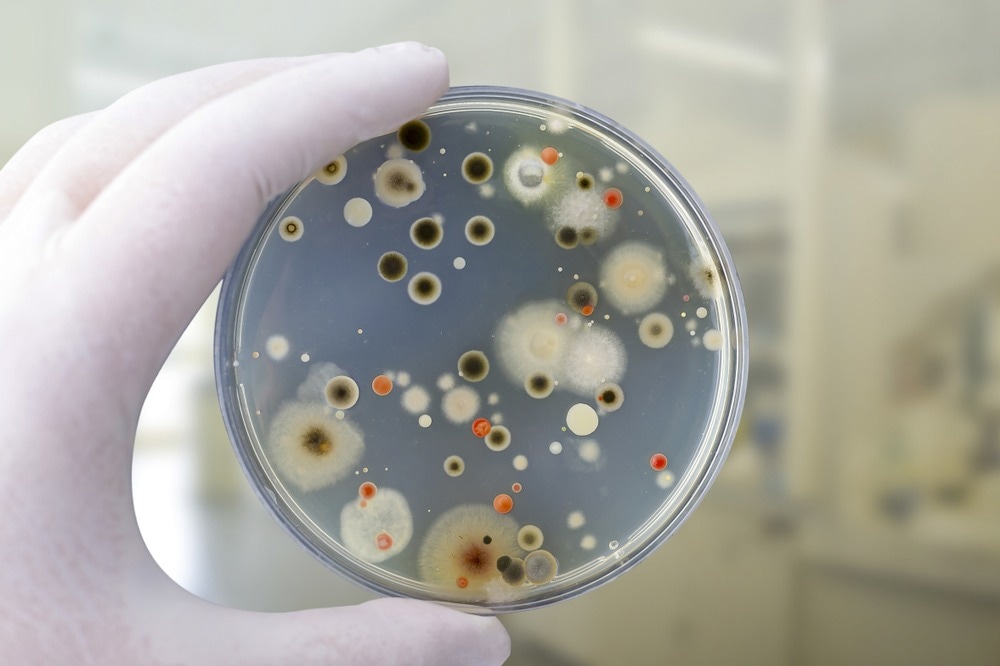A recent study published in the Science of Total Environment journal reviews the potential for helminth, fungal, and protozoan pathogens to associate with plastisphere.

Study: Plastic pollution and fungal, protozoan, and helminth pathogens – A neglected environmental and public health issue? Image Credit: Kateryna Kon / Shutterstock.com
What is plastisphere?
Plastisphere is the distinct microbial biofilm colonizing plastic debris in the environment. Plastisphere microbes are genetically diverse and different from free-living communities, thus suggesting that plastics provide a novel colonization niche. However, most research on the plastisphere has been conducted on prokaryotes, with little attention on eukaryotic pathogens.
Studies on eukaryotic pathogens in the plastisphere have been limited to in vitro analyses or large-scale metagenomics. High-throughput sequencing studies have revealed that eukaryotic reads are more abundant than prokaryotes in the plastisphere community. These studies also suggest the presence of algae, apicomplexans, parasitic ciliates, dinoflagellates, and diatoms.
Nevertheless, whether plastic pollution facilitates the survival, persistence, and dissemination of eukaryotic pathogens remains poorly understood. In the present study, the authors review available data on the potential for fungal, helminth, and protozoan pathogens to colonize the plastisphere and endanger human health.
Fungal pathogens
Research on fungi in the plastisphere has been limited to taxonomic characterization. Sequencing the internal transcribed spacer region of deoxyribonucleic acid (DNA) is commonly employed to identify pathogenic fungi. Rhodotorula and Cladosporium on plastic debris in fresh water and Cladosporium and Candida on polyethylene or nylon-6 biofilms in marine water have been reported.
Scanning electron microscopy (SEM) imaging has revealed that potential fungal pathogens can readily colonize microplastics. Fungi are well suited to the plastisphere due to their adsorptive mode of nutrition, melanization, apical/invasive growth forms, thigmotropism, and the ability to form/associate with biofilms. The mechanisms of how fungi bind to plastics/plastisphere biofilms have yet to be fully understood.
Fungal pathogens likely use a secreted polymer matrix to bind to plastics. Like bacteria, protists, cyanobacteria, and microalgae, fungi secrete exopolysaccharides, which are crucial for the development/maintenance of biofilms. Recent evidence suggests that filamentous hyphae of Aspergillus fumigatus grow embedded in exopolysaccharides, thereby mediating adherence to inorganic substrates.
Melanin is implicated in fungal pathogenesis and the mechanical strength of the cell wall. Melanin can also provide a physical barrier and aid in surface adhesion.
To this end, Cryptococcus neoformans undergo melanization under nutrient starvation, which protects against environmental stressors. Many fungi associated with plastics are melanized, which might facilitate survival and virulence in the plastisphere.
Hydrophobicity is critical in plastic-microbe adhesion. Most fungal adhesins are glycosylphosphatidylinositol (GPI)-modified cell wall proteins, including adhesins from the agglutinin-like sequence (ALS) family. Notably, the hydrophobicity of ALS proteins could influence attachment to abiotic surfaces.
Protozoans
Protozoan parasites like Giardia spp., Toxoplasma spp., and Cryptosporidium spp. can survive in terrestrial and aquatic environments and, as a result, infect different hosts across ecological niches. Transmission of protozoans to humans is dependent upon factors affecting their survival/transport, with most transmission routes including contaminated food/water intake or through the fecal-oral route.
Protozoan pathogens can survive in adverse environments due to thick-walled organelles (cysts/oocysts) that ensure their viability. Giardia cysts and Cryptosporidium oocysts have been shown to adhere to abiotic surfaces and survive here under laboratory conditions. Adding organic matter increases survival, likely due to enhanced aggregation of cysts/oocysts or changes in the bi-layered cyst walls.
Cryptosporidium oocysts readily adhere to biofilms on polyvinylchloride or polycarbonate coupons and integrate with established biofilms. Under in vitro conditions, cysts/oocysts of these protozoans bind to biofilms on polyester microfibers and polyethylene microbeads. Importantly, identifying protozoans in the plastisphere could be impeded by the sensitivity of existing techniques.
Helminths
Helminth infections occur following contact with contaminated soil/water or raw/unwashed food intake.
Helminth eggs are highly infectious and persistent in the environment. Although evidence suggests that helminth eggs readily adhere to soil particles, no study has attempted to identify helminths or their eggs in the plastisphere, thus warranting more research into the association(s) between helminths and plastics.
Helminth eggs have structural similarities to protozoan cysts/oocysts, and their adhesive features may facilitate association with environmental plastics. Additionally, there is evidence that Ascaris eggs adhere to polystyrene microspheres under controlled in vitro conditions, thus highlighting the potential of helminths to associate with the plastisphere.
Concluding remarks
Eukaryotic pathogens have been reported in the plastisphere mainly through metagenomic approaches. Future studies should characterize the plastisphere and the ability of fungal, helminth, and protozoan pathogens to transmit from the environment to humans. Furthermore, establishing the virulence of eukaryotic pathogens in the plastisphere is essential, as detecting a pathogen in the plastisphere alone is inadequate to infer health risk(s) for humans.
Journal reference:
- Ormsby, M. J., Akinbobola, A., & Quilliam, R. S. (2023). Plastic pollution and fungal, protozoan, and helminth pathogens – A neglected environmental and public health issue? Science of The Total Environment. doi:10.1016/j.scitotenv.2023.163093